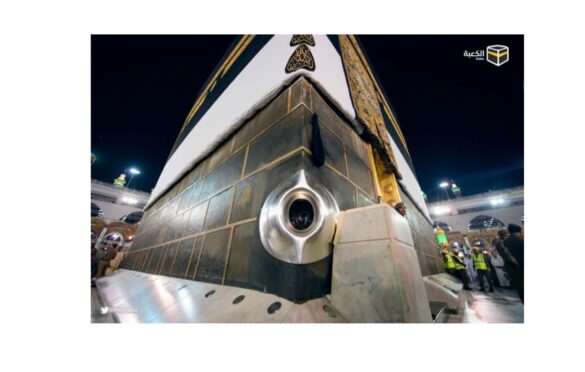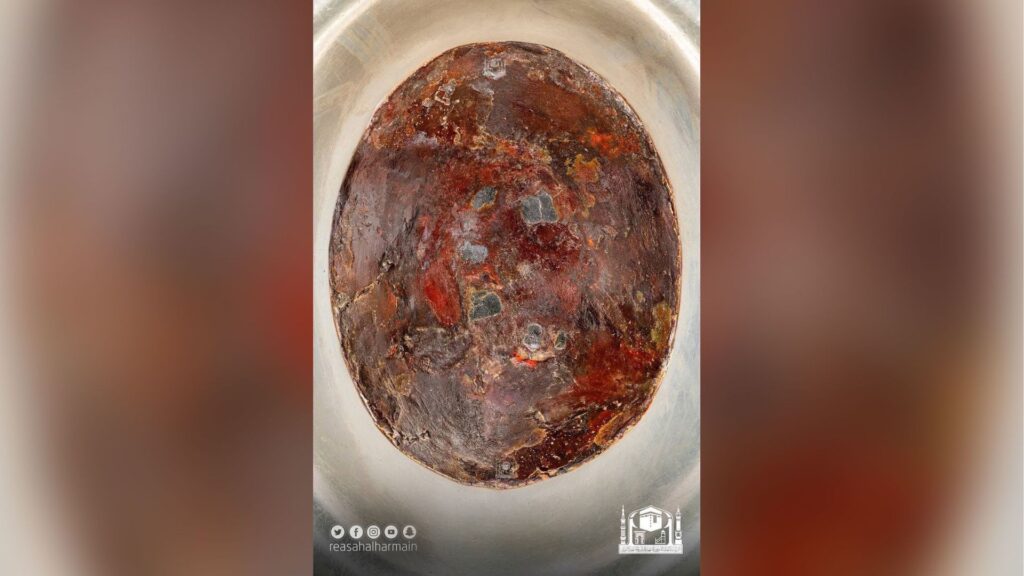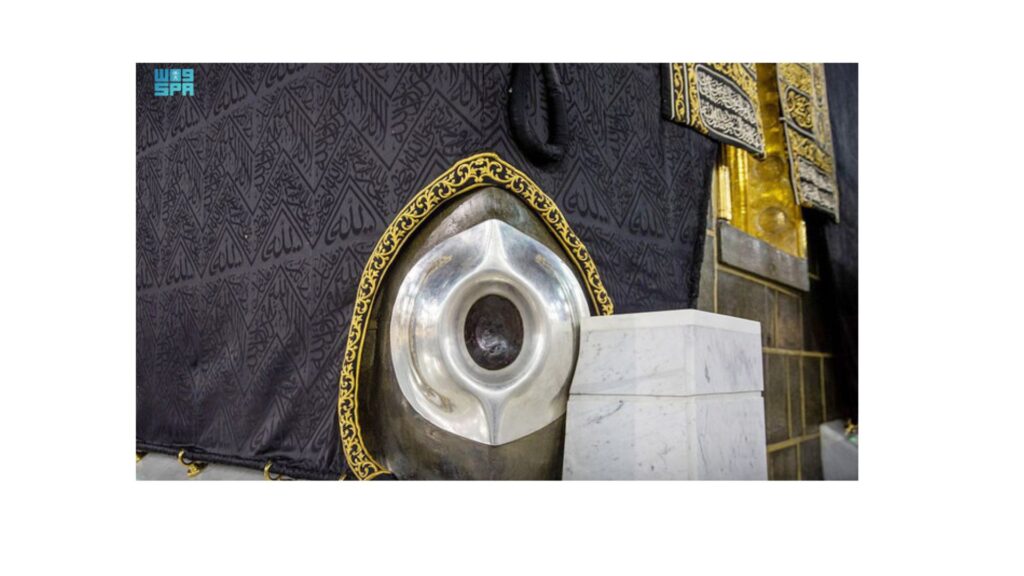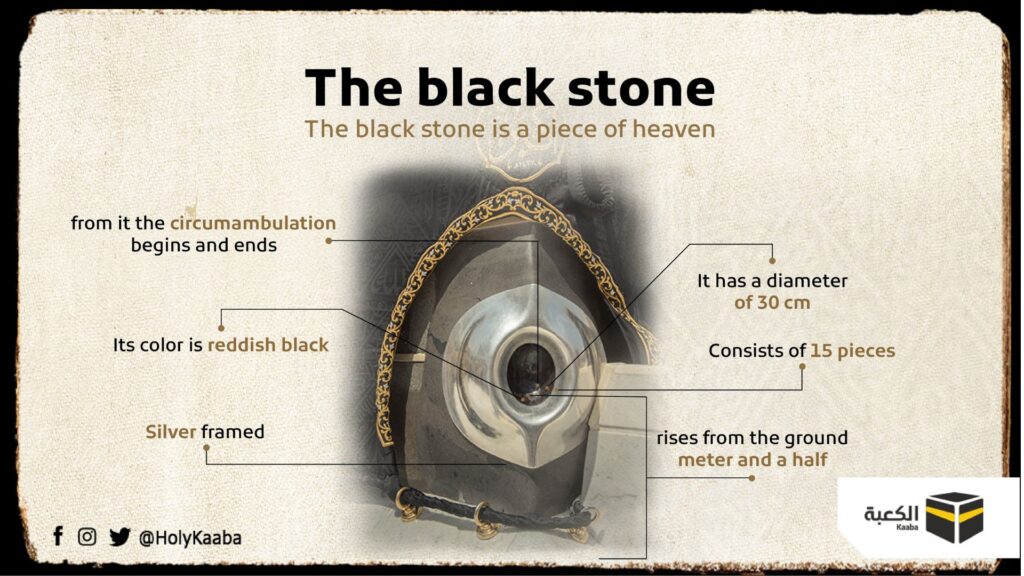The Mysterious Black Stone of Mecca

Introduction
In the heart of Mecca, the holiest city for Muslims around the world, lies an ancient relic that has captured the awe and reverence of believers for centuries – the Black Stone of Mecca. This sacred stone holds deep spiritual and historical significance, drawing millions of pilgrims to the Kaaba, Islam’s most sacred site, every year. In this article, we will explore the fascinating history, characteristics, and significance of the Black Stone of Mecca, shedding light on this enigmatic artifact that continues to inspire millions.
What is the Black Stone of Mecca?
The Black Stone of Mecca, also known as “Al-Hajar Al-Aswad” in Arabic, is an ancient, dark rock that is set in the eastern corner of the Kaaba, a cube-shaped building located in the center of the Masjid al-Haram mosque in Mecca, Saudi Arabia. The Kaaba is considered the House of Allah and is the focal point of Islamic pilgrimage (Hajj) and prayer (Salah).
What is the Type of Black Stone and How was it Formed?
The exact type of the Black Stone of Mecca has been a subject of scholarly debate, but it is widely believed to be a meteorite. Most sources suggest that it belongs to the Chondrite class of meteorites, which is a common type comprising stony, non-metallic meteorites. Chondrites are known for their high silicate content and lack of metal.
As for its formation, it is believed that the Black Stone predates the Earth, originating from the time of the solar system’s creation, which makes it over 4.5 billion years old. According to Islamic tradition, the stone was sent down from heaven as a gift from Allah to the Prophet Ibrahim (Abraham) and his son Isma’il (Ishmael) to mark the location of the Kaaba, which they were ordered to construct as a place of worship for Allah.

When were the First Records of the Black Stone in Mecca?
Historical records regarding the Black Stone of Mecca date back to antiquity. Its veneration and significance predate the advent of Islam and were already deeply rooted in the religious practices of the pre-Islamic Arab tribes. Even before the time of Prophet Muhammad, the Black Stone was considered sacred, and it was customary for tribes to make pilgrimage to the Kaaba.
The most crucial turning point for the Black Stone came with the advent of Islam in the 7th century CE when the Prophet Muhammad, upon conquering Mecca, performed the cleansing of the Kaaba by removing idols and restoring its purity. The Black Stone was retained as a symbol of continuity and unity, bridging the gap between the pagan past and the new monotheistic faith of Islam.

Characteristics of the Black Stone of Mecca
The Black Stone is a small, irregularly shaped rock, roughly 30 cm (12 inches) in diameter. Its surface is black, with varying shades and patterns that make it visually intriguing. Over the centuries, due to the touching and kissing by countless pilgrims, the stone’s surface has been worn smooth, and its original appearance has been altered.
Despite its relatively small size, the stone is encased in a silver frame, known as the “mirqab,” which helps to hold the fragmented pieces together. It is important to note that the stone is not a single, continuous piece, but rather a collection of smaller fragments fused together.

The Location of the Black Stone of Mecca
The Black Stone is embedded in the eastern corner of the Kaaba, about 1.5 meters (5 feet) above the ground. The Kaaba itself is positioned in the center of the Masjid al-Haram, the Grand Mosque of Mecca. The mosque is a vast open space that can accommodate millions of worshippers during the Hajj pilgrimage.
Significance of the Black Stone of Mecca
The Black Stone holds immense spiritual significance for Muslims worldwide. During the Hajj pilgrimage, which is one of the Five Pillars of Islam, pilgrims must perform the Tawaf, a ritual that involves circumambulating the Kaaba seven times in a counterclockwise direction. Each circuit begins and ends by facing the Black Stone, and pilgrims often strive to touch or kiss the stone during the Tawaf.
The stone is a powerful symbol of unity among Muslims, regardless of their geographic, cultural, or linguistic differences. It represents the focal point of their faith and serves as a reminder of the shared religious heritage that connects millions of believers around the globe.
Who Can See the Black Stone in Mecca?
The Grand Mosque of Mecca, including the Kaaba and the Black Stone, is accessible only to Muslims. Non-Muslims are strictly prohibited from entering the holy city of Mecca. This restriction is rooted in the significance of the site and its religious importance to the Islamic faith. The Saudi Arabian authorities enforce these regulations and maintain the sanctity of the pilgrimage experience for Muslims.
Conclusion
The Black Stone of Mecca remains an enduring enigma, shrouded in the mists of time and surrounded by centuries of devotion and veneration. Its meteoric origin, its connection to the Prophet Ibrahim, and its continued significance in the Islamic faith all contribute to its allure and mystery. This ancient stone, though physically unassuming, symbolizes the unity of millions of Muslims worldwide, drawing them to the sacred city of Mecca year after year.
As a symbol of faith and a testament to the power of unity, the Black Stone serves as a profound reminder of humanity’s spiritual journey. As pilgrims touch the stone, they become part of a tradition that spans centuries, joining the ranks of believers who have sought solace, strength, and connection in the sacred rites of the Hajj. The Black Stone’s timeless presence in the Kaaba continues to inspire devotion, making it a cherished and revered cornerstone of Islamic history and faith.
